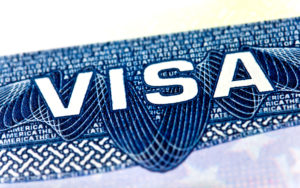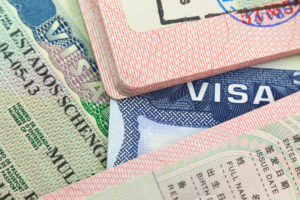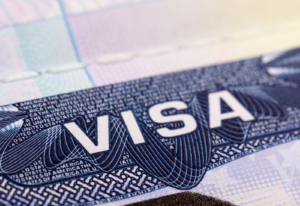Navigating the Path from H-1B to Permanent Residency in the U.S.
Introduction to H-1B and Permanent Residency
We represent large and small companies in securing both temporary and permanent employment-based work visas. There is an alphabet soup of work visas, but the most common of the temporary visas is the H-1B Specialty Occupation visa. The question we are asked most often after we have secured a temporary work visa for a client’s employee or candidate: how can an H-1B visa holder become a permanent resident? This post highlights a common pathway for H-1B workers to obtain permanent residence through EB-1 and EB-2 visas.
The H-1B Specialty Occupation Visa
Overview of H-1B Visas
In prior posts, we have described the policies, principles, and practices of the H-1B Specialty Occupation visa category, so we will not revisit them here. These visas are made available to qualifying employers for hiring eligible foreign individuals to live and work in the U.S. on a temporary basis. The H-1B eligibility criteria are two-fold: the first focuses on the job itself and the other focuses on the sponsored individual’s qualifications for the job. As the name of the visa suggests, H-1B occupations require highly specialized knowledge, including the attainment of at least a bachelor’s degree, and at least one of several other criteria, the most common of which is that a bachelor’s degree or higher is required by the employer for the position.
H-1B Visa Cap and Demand
There are 85,000 new H-1B visas made available every fiscal year, of which 20,000 are limited to foreign individuals who obtained their advanced degree (master’s degree or higher) from a college or university in the U.S. Many H-1B visa holders work in STEM fields for Big Tech, but the visas are also popular in a variety of other disciplines, from business administration to biotechnology, financial services to food science, and real estate development to radiology. Given their popularity, it is not surprising that the annual demand for H-1B visas far exceeds the supply. USCIS reports that for Fiscal Year 2022, it received 308,613 registrations from interested employers and for Fiscal Year 2023, the number of registrations was 483,927.
Duration and Renewal of H-1B Visas
Once approved, H-1B visas are granted for up to 3 years and can be extended for a total of up to 6 years (there are some exceptions, as explained below). If the sponsored foreign individual is already present in the U.S. in lawful status when the approved validity period of the H-1B is to begin, the USCIS will typically change the individual’s status to H-1B. If this individual is outside the U.S., he or she must also obtain an H-1B travel visa foil in the passport before traveling to the U.S. to commence H-1B employment.
The Impact of H-1B Visas on the U.S. Economy
The H-1B visa provides extraordinary benefits to the U.S. economy generally and to U.S. companies in particular. After living and working in the U.S. and contributing to its growth, many H-1B holders decide that they prefer to stay in the U.S. if they can. But what happens when an H-1B holder has remained in the US as long as possible and cannot apply for additional H-1B extensions? We see this scenario a lot in our business immigration practice and as long as the decision to seek permanent residence is made early enough in the H-1B journey, it can often be solved without the individual having to leave the U.S. at the conclusion of his or her 6-year H-1B stay.
Adjusting Status From H-1B To Permanent Resident Employment-Based Visa
Transitioning from H-1B to Permanent Residency
H-1B visas are not subject to what is called the “dual intent rule”. Dual intent means having the intent to immigrate to the US at the time a temporary visa is granted. Dual intent is prohibited in most other temporary visa categories and can be used as a basis for visa denial by US Citizenship and Immigration Services (USCIS). Because there is no prohibition on dual intent, H-1B holders are allowed to “adjust status” from within the United States to a permanent residence visa. This means an H-1B holder can file a permanent residence visa petition while in the US and, once approved, adjust status to the permanent residence visa without having to leave the country. Adjustment of status petitions grant applicants what is called “deemed status” in the US. This means that even if the H-1B expires, the adjustment of status petition allows the applicant to remain in the US while USCIS processes it.
Employment-Based Permanent Residence (EB) Categories
The most common pathway for an H-1B holder to adjust status within the US to a permanent visa petition is to be sponsored by an employer in a permanent residence employment-based (EB) preference category. There are 5 “EB” preference categories that an H-1B holder may qualify for, but EB-1 and EB-2 offer many advantages for H-1B holders over other categories. Broadly speaking, the high degree of knowledge, skill and experience required for eligibility for H-1B are often transferrable to the EB-1 or EB-2 visa categories.
EB-1 is for individuals of “extraordinary ability” and EB-2 is for individuals of “exceptional ability” and “advanced degree holders”. The eligibility criteria for each are extensive and beyond the scope of this post to explain in detail. What is important is that like H-1B, both EB-1 and EB-2 visas require applicants to have very impressive education and experience credentials. As a result, they are good potential options for H-1B holders to explore who are interested in remaining in the US beyond the visa’s 6-year allowance.
EB-1 and EB-2 petitions are complex and processing times at USCIS currently unpredictable. H-1B holders considering an adjustment of status option are therefore encouraged to discuss it with experienced immigration counsel to ensure that pursuing it while maintaining lawful status in the US is feasible.


























